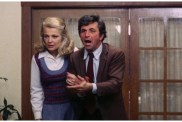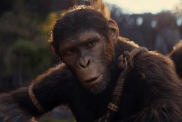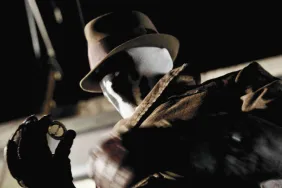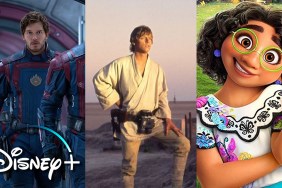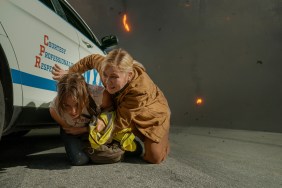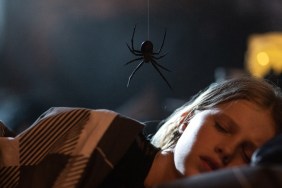
How did Peter Jackson and team manage to turn all 310 pages of J.R.R. Tolkien’s “The Hobbit” into three films (410 if you count the appendices)? Easy, just add several back-story inserts, plenty of walking and a lot of chasing, pausing only for brief moments of discussion after which all that was discussed will be ignored.
It has been nine years since we last followed a group of fantastical characters as they walked around Middle Earth and with The Hobbit: An Unexpected Adventure we are followers once again. Only this time realizing a story one-fifth the size of Tolkien’s “Lord of the Rings” novels has been needlessly stretched out into three films as commerce continues to drive art.
Where Jackson’s Lord of the Rings trilogy was a financial risk, The Hobbit trilogy is a financial certainty and with 3-D and three films it’s going to mean big bucks for Warner Bros., but after watching this first installment it’s quite clear no more than two were necessary.
Taking place approximately 60 years prior to the start of Fellowship of the Ring, we meet young Bilbo Baggins (Martin Freeman) as he’s approached out of the blue by the wizard Gandalf (Ian McKellen) to partake on a quest to help a group of dwarves led by Thorin Oakenshield (Richard Armitrage) to reclaim their home on the Lonely Mountain and the riches within, now guarded by the dragon Smaug. We learn of the dwarves’ demise in an opening where no character’s name is remembered and Smaug attacks and lays waste to the dwarves dwelings, sending them off into the wild without a place to call home.
Bouncing from that moment in Middle Earth history into a present day setting, we see an elder Bilbo (Ian Holm) who narrates the opening of the story before we’re whisked back in time. Bilbo, Gandalf and the league of dwarves set off on their journey where they will soon face several obstacles over the course of nearly three hours, after which we realize, the journey has just begun.
Wizards on sleds driven by bunny rabbits, mountain trolls, orcs, goblins, snarly dog creatures, a shadowy Necromancer, dwarves, hobbits and elves all play a role in what is to come. Bilbo meets Gollum (Andy Serkis) and even Frodo (Elijah Wood) shows up for a spell. Everything about The Hobbit feels familiar, which means none of it feels new. I can’t say I was overly entertained, but I will say the two hours and 45 minutes weren’t numbing. Instead it felt as if I was watching deleted scenes from the original trilogy, deleted because they are hardly necessary for the story.
One such needless moment that sticks out like a sore thumb comes as the group of travelers is crossing a rocky mountain pass. The mountains come to life amidst a rain and thunder storm as giant rock monsters throw boulders and punch one another in their rocky heads. Why this was necessary when the threat to our protagonists is clearly zero is beyond me and much of the film plays out in the same fashion. One moment of peril leads to the next and each is resolved by the likeliest of means, be it the opportune arrival of Gandalf or the return of the giant eagles that, for whatever reason, don’t just fly this group all the way to their destination even though it’s right there in plain sight.
I was thankful, however, this wasn’t nearly as goofy as I expected it to be, though the opening 20 minutes or so where we’re introduced to the dwarves — the names of most of whom I can’t place with their faces — is a bit of a slog.
This isn’t to say the film is a total loss. The casting is spot on, though, to be fair, the majority of the cast are returning members from the Rings franchise even though Holm, Wood, Hugo Weaving, Christopher Lee and Cate Blanchett are only seen briefly. The new cast members include the actors that make up the band of dwarves, while the rest are either men in rubber suits or CG creatures, primed and perfect for the film’s 3D environment, but I can’t just leave it at that.
I saw The Hobbit in High Frame Rate (HFR) 3D where instead of 24 frames per second as films are traditionally projected, the presentation is shown at 48 frames per second, which brings an unsurpassed measure of clarity to the picture, but it isn’t altogether perfect. It takes some time for your eyes to adjust, but even, then where the precision of the image is welcomed, there were times it had the appearance of an over-cranked Charlie Chaplin film.
I noticed it almost immediately as Ian Holm made his way through his home and it appeared as if he was moving at a rather rapid pace while other moments seemed perfectly natural. There is also a bit of a jitter whenever the camera pans across a scene. Any hesitation or lack of fluidity in the motion causes a stuttering effect in the picture that becomes the focus of attention rather than the film itself. Perfection clearly has its downsides, but this is obviously the first stages in what could be an impressive new filming technique even if, right now, there are moments it looks like nothing more than the cheap roller-coaster visuals of Disneyland’s Star Tours.
On a more positive note, the effects are immaculate. The abundance of CG creatures are so impeccably realized you can’t help but marvel, but it does get to a point where enough is enough and if these orcs and goblins must be in the scene, then won’t one of them pick off a few of these dwarves to get the pack down to a more manageable size?
The Hobbit: An Unexpected Journey is the first installment in a trilogy that is already overstuffed. This doesn’t make it a bad movie per se, but with the excess of scenes in a story that doesn’t call for “more”, by the time the third film ends it will be a matter of “finally” rather than breathless satisfaction and a desire to watch it all over again.
I’m sure a good film can be found in what will likely be close to nine hours of on screen material once all three films are finally finished. But by the time you get done with Part One you’d be right to be frustrated at the knowledge you have to wait another year for Part Two only to realize you’ll have to wait another seven months after that for it to finally come to an end. It may make the studio money, but it’s a terrible way to go about doing it. Not to mention, it damages a good story.
